Difference between revisions of "Leather shoes"
| Line 148: | Line 148: | ||
'''Important''' | '''Important''' | ||
| − | * | + | * Leather shoes are available in all imaginable types of leather. Of these many types of leather are very sensitive and not easy to maintain. These include the [[Suede|suede]], [[Nubuck|nubuck]] or [[Aniline leather|aniline leather]]. These open pore leathers are always sensitive! No matter how much the seller promotes a [[Waterproofing|waterproofing]]. Always make a water rubbing test. A drop of water would sink into open pore leather and darken it. Penetrates the water, the shoe or boot is never suitable for wet weather! |
| − | + | ||
| + | Auch nicht mit einer [[Imprägnierung]]! Kein [[Lederpflege|Pflegemittel]] macht diese Leder dann unempfindlich. Sonst hätte es der Hersteller schon gemacht. | ||
* Helle Leder sind immer empfindlicher als dunkle Leder. Flecken und Kratzer fallen auf hellen Schuhen viel deutlicher auf und lassen sich auch weniger leicht mit [[Lederpflege|Pflegemitteln]] oder [[Lederreiniger|Reinigern]] entfernen. Sind die Leder [[Offenporige Leder|offenporig]] und hell, ist es die empfindlichste Kombination. Das ist dann ein kurzlebiges Schuhwerk oder nur für besondere Anlässe. | * Helle Leder sind immer empfindlicher als dunkle Leder. Flecken und Kratzer fallen auf hellen Schuhen viel deutlicher auf und lassen sich auch weniger leicht mit [[Lederpflege|Pflegemitteln]] oder [[Lederreiniger|Reinigern]] entfernen. Sind die Leder [[Offenporige Leder|offenporig]] und hell, ist es die empfindlichste Kombination. Das ist dann ein kurzlebiges Schuhwerk oder nur für besondere Anlässe. | ||
* Lederschuhe können innen [[abfärbende Leder|abfärben]]. Machen Sie einen Reibtest mit einem hellen Lappen. Dann können Sie prüfen, wie es den Socken ergehen könnte. | * Lederschuhe können innen [[abfärbende Leder|abfärben]]. Machen Sie einen Reibtest mit einem hellen Lappen. Dann können Sie prüfen, wie es den Socken ergehen könnte. | ||
Revision as of 20:44, 14 March 2015
Contents
History
The oldest depiction of footwear comes from the cave of Altamira in Spain and is approximately 15,000 years old. There are pictures of hunters with a kind of boots.
The oldest footwear found is 8300 years old. It were sandals and they were found in the Arnold Research Cave in Missouri, USA. They have been made from plant material.
The oldest known leather shoe was excavated in an Armenian cave by archaeologists. The estimated age of 5,500 years (period between Neolithic and Bronze Age). The shoe is made from one piece of cowhide and has a lining of grass.
The famous footwear from the glacier mummy Ötzi is about 5300 years old. This shoe structure was surprisingly complex. The upper (outer shoe) was made of deerskin with hair side facing out as protection against moisture. The sole was made of better insulating bearskin with hairside facing inside.
1st Photo:Roman legionary sandal 1st century AD (- German Leather Museum in Offenbach)
2nd Photo:Cow's Mouth shoe 16th century (- German Leather Museum in Offenbach)
Why leather?
Shoes are available from many different materials and in infinite colors and shapes. First, the shape and appearance of a shoe is to protect the foot against injuries and the climate. The appearance of a shoe is also influenced by fashion or or displays the status of the wearer. There are women's shoes and men's shoes, slippers, sneakers, boots, hiking boots, sandals and much more.
Since there are shoes, leather is processed, because this resource is in sufficiently available. Leather can be formed, it can be sewed, it can be waterproofed without loosing the breathability and provides a strong protection against injuries of the feet because of its robustness. You do not sweat as much in leather shoes as with substitution materials. Fabric is also breathable, but waterproofing is not as good as on leather and also the protection against injuries is significantly worse. Through these outstanding properties leather is still the best material for shoes. Most substitution material is processed for price reasons.
Materials and Figures
In the production of upper leather for shoes nowadays all types of leather are processed. Often the distinction of leathers is not easy. The most common tyes of leather are pigmented smooth leather (pigment binder coating on the grain side), aniline leather (open pore grain side leather), waxed or oiled leather, suede and nubuck. For sole leather, vegetable tanned cow hide is processed. The processed footwear materials must be specified in Europe.
The shoe industry is the world's largest processor of leathers. Worldwide annual 14 billion pairs of leather shoes are produced. 11.5 billion come from Asian factories and China is with 8 billion pairs the biggest producer. By comparison, in Germany only 26 million pairs of shoes are produced per year.
The most intense consumption of shoes takes place in the USA. According to the statistics, every American buys six pairs of shoes every year. In Europe, Japan and Canada, between three and five pairs or shoes are bought per year. The average Chinese buys 2,5 pairs fo schoes per year.
In Germany, every women has 17.3 pairs of shoes at home and men have 8.2 pairs (according to a survey of 2014).
Expensive brand shoes - shoes in the shoe shop - shoes on the cheap market
The labelling requirement for shoes
In Europe there is a material labelling requirement for shoes. Manufacturer of footwear (sandals, shoes, boots) are obliged to provide the processed materials. In text form or as thumbnails.
The following components of a shoe must be identified in terms of the used material:
Image 1: Uppers: The upper outer material is meant.
Image 2: Lining and insole: The upper and lower materials inside the shoe are meant.
Image 3: Sole: The outsole is the contact material to the floor which wears off.
The specified material must be 80% of the complete volume and surface of the processed materials. If several materials are processed (e.g. leather and textile as upper material), the main materials must be specified.
The following materials are distinguished:
Image 1: Leather: "Leather" are hides and skins were its original fiber structure was not changed. Materials which are produced from dissolved or crushed leather fibres and processed into sheets are not "leather". An applied color film or layer is not allowed to be thicker than 0.15 mm.
Image 2: Coated leather: Coated leather is leather, where a painting or a film is thicker than 0.15 mm, but not more than 1/3 of the total thickness. If the coating greater than 1/3, then it is no more leather but a synthetic leather.
Image 3: Textile: Textiles are all natural and synthetic textiles.
Image 4: Other Material: Other materials are all materials that are not covered by the upper groups. For example, rubber or plastic for an outsole.
Leather quality of shoes
There are many criteria that define the quality of a shoe.
- Rub fastness (the resistance of the leather surface to mechanical abrasion)
- Water vapor permeability
- Tear resistance (the force that must be applied to increase existing tears)
- Discolouration (the staining of socks caused by the leather lining inside the shoe)
- Adhesion of the leather colour
- Bending behavior
- Light fastness (resistance of the material's colour to fading)
Main shoe leather terms
Upper Leather
The upper leather is leather on the visible side of the shoe. It makes up the largest part of the processed leather for shoes. The variety of processed leathers is unlimited, and leather many species are processed. Typical is cow leather, calfskin, goatskin, sheep leather and even horse leather in the high price segment. But also all exotic leathers are processed. Crocodile leather, snake leather and a lot of other exotic leathers are processed. Dependen on the fashion, the processed leather can be coarse or fine-grained, matt or glossy, metallic or luminous.
Upper leather in many variations: coloured - perforated - carved.
Sole leather
When the sole of a shoe is processe of leather, it's called leather sole. Sole leather is thick (2,5 - 6 mm) little pliable and solid vegetable-tanned leather.
Leather sole, made in Spain with a sensitive lightly sanded leather.
Leather sole made in Germany from cow with crocodile upper leather.
Not really easy to care: Golf shoes with white suede as sole and rubber studs.
Leather lining
Shoes can have a leather linign incide. It's not the leather where the foot is on it, but the leather, which is in contact to the rest of the foot in the shoe. A leather lining, therefore needs to feel good and be permeable to water vapor, so you do not sweat. As leather lining, leather from cows, calfs, goats, sheeps and pigs are processed.
Shoe Care - Leather selection
There is a wide range of leather care products for shoes. In the shoe stores often matching shoe care products are offered. But there is an endless selection of leather types in footwear. From easy to care pigmented smooth leather to pull up leather to highly sensitive aniline leather or suded and nubuck. Often, the clients are not aware of the sensitivity of some types of leather and overestimate the possibilities of waterproofing.
Important
- Leather shoes are available in all imaginable types of leather. Of these many types of leather are very sensitive and not easy to maintain. These include the suede, nubuck or aniline leather. These open pore leathers are always sensitive! No matter how much the seller promotes a waterproofing. Always make a water rubbing test. A drop of water would sink into open pore leather and darken it. Penetrates the water, the shoe or boot is never suitable for wet weather!
Auch nicht mit einer Imprägnierung! Kein Pflegemittel macht diese Leder dann unempfindlich. Sonst hätte es der Hersteller schon gemacht.
- Helle Leder sind immer empfindlicher als dunkle Leder. Flecken und Kratzer fallen auf hellen Schuhen viel deutlicher auf und lassen sich auch weniger leicht mit Pflegemitteln oder Reinigern entfernen. Sind die Leder offenporig und hell, ist es die empfindlichste Kombination. Das ist dann ein kurzlebiges Schuhwerk oder nur für besondere Anlässe.
- Lederschuhe können innen abfärben. Machen Sie einen Reibtest mit einem hellen Lappen. Dann können Sie prüfen, wie es den Socken ergehen könnte.
- Es werden Produkte angeboten, um zu enge Schuhe zu weiten. Kaufen Sie nur Schuhe, die wirklich passen. Der Spielraum beim Weiten des Leders ist nur sehr gering.
Bei so offenporigen, hellen Anilinledern ist auch eine intensive Imprägnierung kein ausreichender Schutz. Das ist ein Schönwetter-Schuhwerk.
Filme über Schuhpflege
Die Reinigung und Plfege von Glattlederschuhen von www.himershoes.com.
Die Reinigung von Raulederschuhen.
Weitere Informationen
- Grundregeln im Umgang mit Leder
- Schuhcreme
- Imprägnierung
- Sohlenöl
- Abfärbende Leder
- Enge Schuhe weiten
- Lederstiefel
Maßschuhe
Auch in Deutschland werden noch Schuhe gefertigt. Besondere Kunstwerke entstehen dabei durch Maßschuh-Hersteller, die bei Bedarf auch Exotenleder verarbeiten.
Ein wunderschönes Video über den handwerklichen Herstellungsprozess von Lederschuhen.
Schuhe aus Straußenleder für Stars und blaue Golfschuhe gefertigt durch Himer Maßschuhe
Maßschuhe aus Rochenleder gefertigt durch Himer Maßschuhe
Lachsleder-Maßschuh gebügelt und Straußenleder-Maßschuh von Jacob, F. Schuhe
Rochenleder- und Cordovan-Maßschuh von Jacob, F. Schuhe
Aalleder- und Alligatorleder-Maßschuh von Jacob, F. Schuhe
Weitere Informationen
Historische Schuhe
Schuhe haben über die Jahrhunderte und Kulturkreise die unterschiedlichsten Farben und Formen gehabt.
Damen-Ballschuh aus Goldleder - Römische Legionärssandale 1. Jh. n.Chr. - gesehen im DLM - Deutsches Ledermuseum in Offenbach
Kuhmaulschuh oder Hornschuh um 1540 - Schnabelschuh (Spitze modische Gründe) - gesehen im DLM - Deutsches Ledermuseum in Offenbach
"Stelzschuh Chopine aus Venedig um 1600 - Damenschuh (Höhe modische Gründe) - gesehen im DLM - Deutsches Ledermuseum in Offenbach
Bildergalerie
Turnschuhe aus Veloursleder - Kuhfell - Fettleder
Schuhe mit Lachsleder (www.ledermanufaktur.com) - Bemalte Schuhe - Lammfell-Pantoffeln
Sehr schön bemalte Lederschuhe von www.schunikat.com
Stiefel Sonderanfertigung 2.500 €, Größe 47, 15 cm Absatz (www.ledermanufaktur.com)
Schlangenleder - Stretchleder - Aalleder
Schuh mit "Used-Look" - Schuh mit Prägung
Schuh aus Veloursleder - Lederschlittschuh
Joschka Fischer in Turnschuhen zur Vereidigung zum Umweltminister - Zehenschuh - gesehen im DLM - Deutsches Ledermuseum in Offenbach.
Lederstiefel aus Schlangenleder - Bedruckter Damenschuh aus Spanien
Nachbau von Gauklerschuhen aus dem Mittelalter von Jacob, F. Schuhe und www.ledermanufaktur.com
Damen-Schuhe aus Krokodilleder
Patchwork-Schuh
Ledersandalen von Selestudio
Lackleder-Schuhe
Weitere Informationen







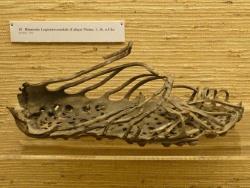
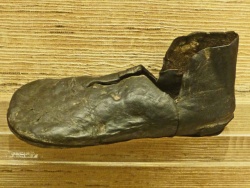
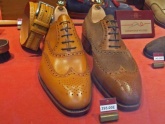

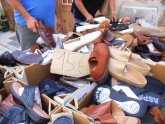









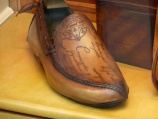
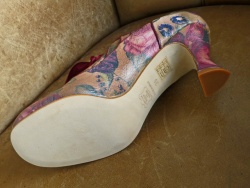
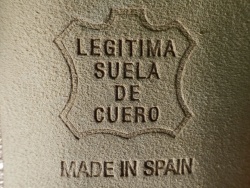
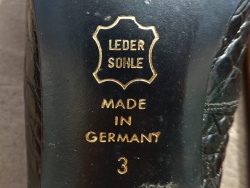
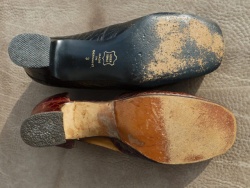
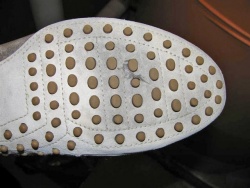

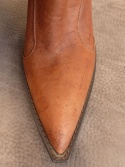
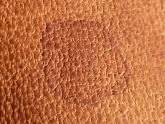

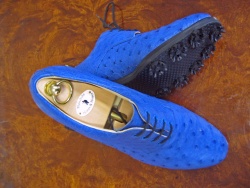
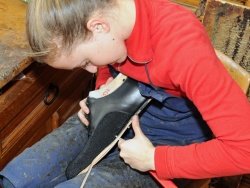
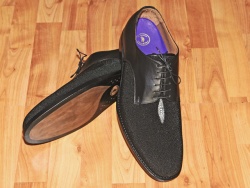
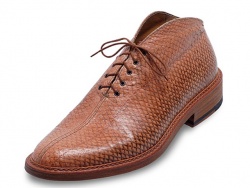
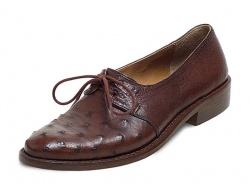
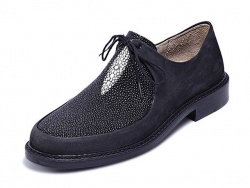
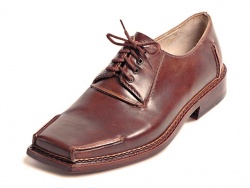
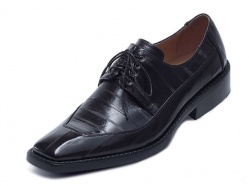
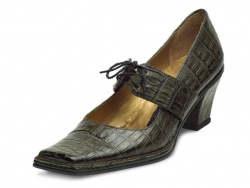
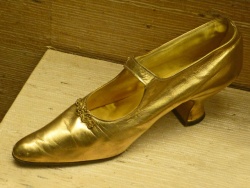
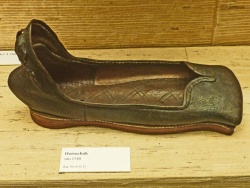

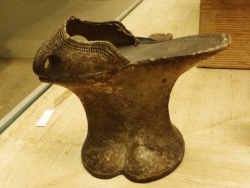
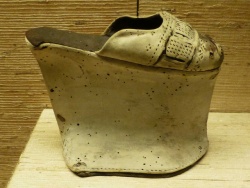
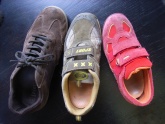
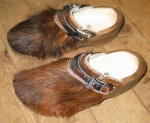
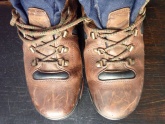

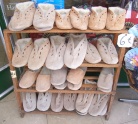
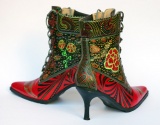
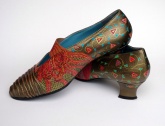

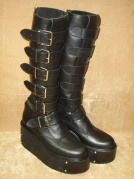

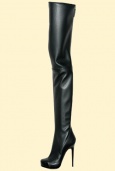
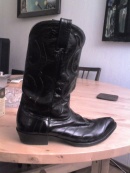
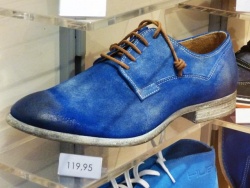
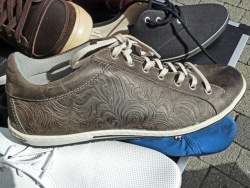

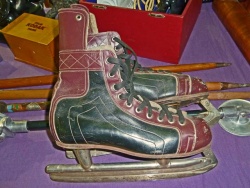
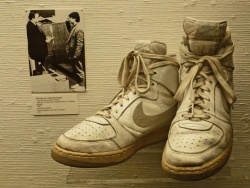
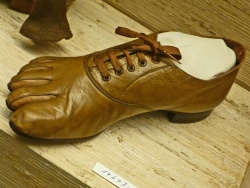
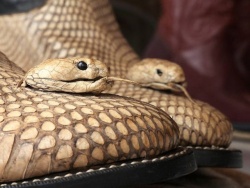
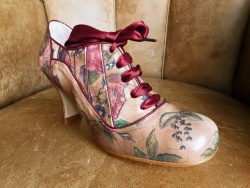
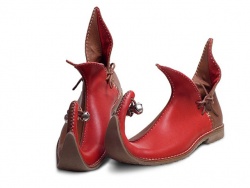

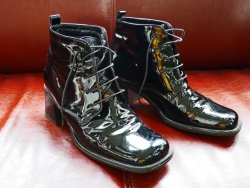



 a kotori web solution
a kotori web solution